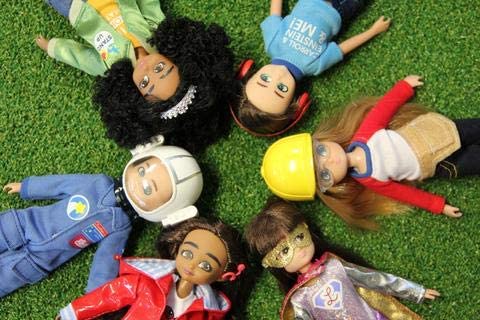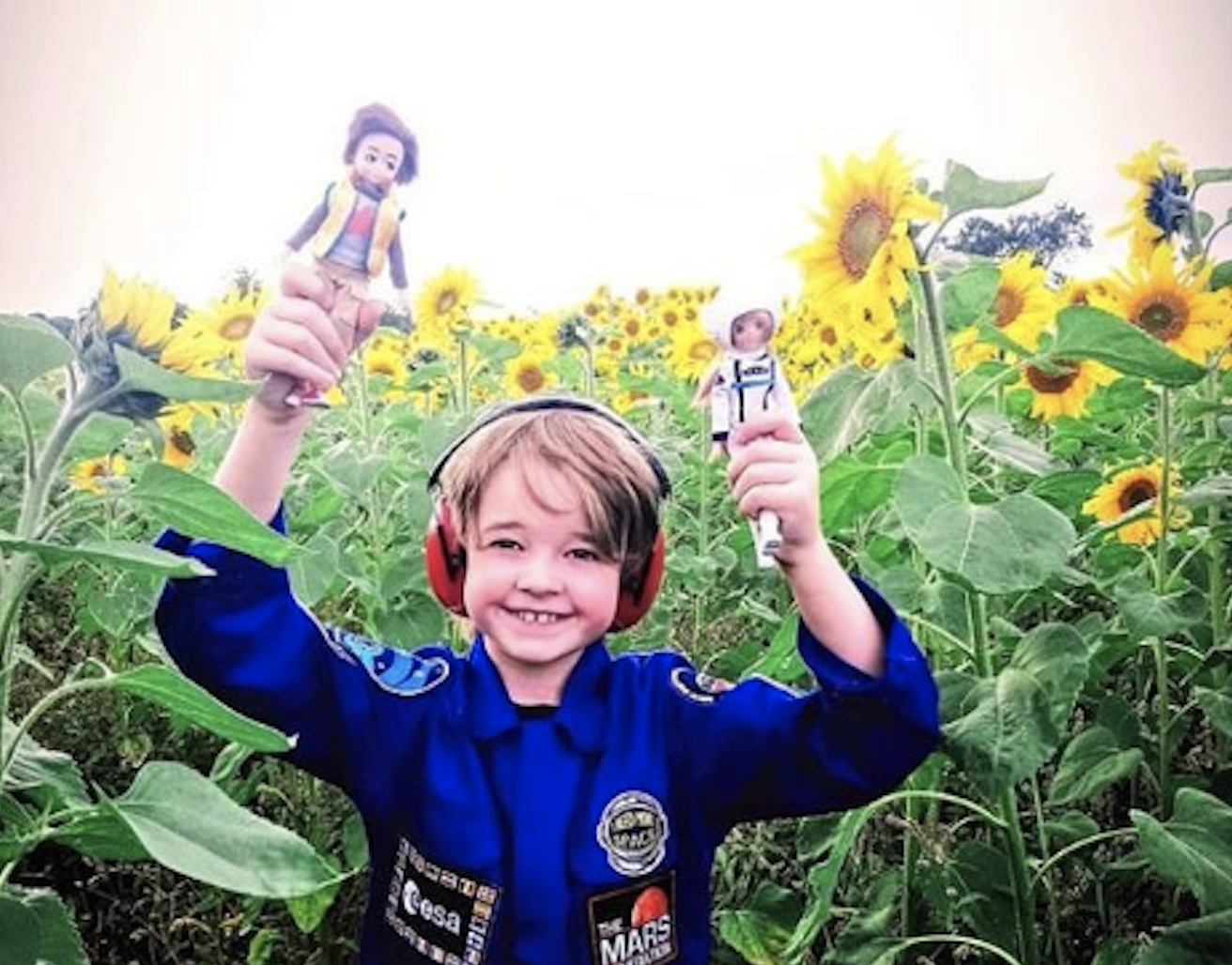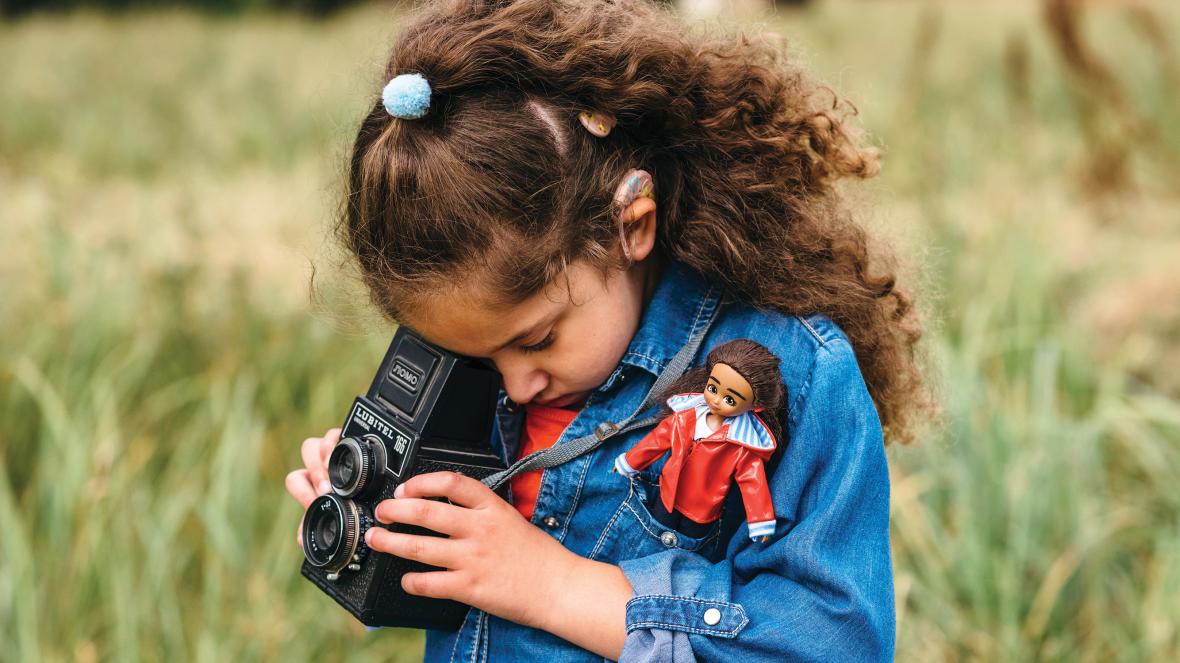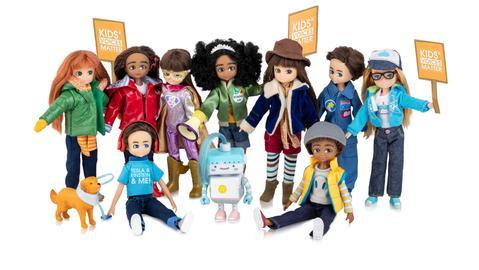BRAND WE LOVE: LOTTIE DOLLS

Lottie Dolls is a toy company based out of Northern Ireland, that encourages kids to reach for the stars and to be themselves. The company "want(s) to encourage all kids – regardless of gender, ability or ethnicity - to follow all their dreams," and we couldn't agree more.
In 2012, Ian Harkin launched Lottie Dolls with the goal to empower young kids to not only dream of big of bright futures, but also to not be afraid to be themselves today (no matter how young). To encourage this message, Lottie Dolls are based on the dimensions of children, not adults, and each doll is inspired by a unique child with a real kids. For example, 8 year old Hayden Geraghty, an autistic boy from Northern Ireland was the inspiration for a new addition to the Lottie Doll range called Loyal Companion Finn. Finn is a boy doll dressed in a space suit and can be owned by kids all around the world (seen in image below).

The doll range includes both boys and girls, represents all races, and spans a diversity of interests, from horse riding dolls to engineering dolls. Additional outfits and clothing can be purchased for all the dolls, as well as play sets including doll houses and toy barns. Lottie.com additionally has several activities available for kids of all ages.
We interviewed founder Amy Harkin on what inspired her to revolutionize the toy world by creating dolls children can properly relate to and be inspired by, all why keeping sustainability in mind, making spoiling our children a bit more guilt free!
Why and when did you come up with the Lottie Doll Concept?
Lottie was launched in August 2012 however we had been researching the idea for 18 months before that. We didn’t feel comfortable buying any of the dolls that were on offer in the market and from speaking to friends they too mentioned the same thing so we did some desk top research and came across some academic research that was published in The Times by a Dr Margaret Ashwell who was head of the British Nutrition Foundation. She had proven that kids who played with dolls with unrealistic body proportions were developing body image issues. We contacted Dr Ashwell and she put us in touch with child psychologists, play experts, we did our own focus groups with parents and kids and developed over 100 actionable points which we built into Lottie.
The concept of Lottie doll is that a doll should be more than just a fashion doll. How do you hope these dolls will inspire the kid’s who play with them?
One of the biggest things we did was base Lottie on a kid, for 60 years dolls have been based on adults, adult body shapes, adult agendas, 60 years ago the average age of a doll user was 12 now its 5 to 6. Childhood has compressed so much that we thought we’d focus on the kids themselves not what they want to be when they grow up, a 5 to 6 year old aspires to be like their older sister, where a 12 year old aspires to be an adult, so Lottie is based on the average proportions of a 9-year-old child. The comments that we have received back from kids are that she is relatable, she looks like them, has the same interests etc.
A lot of dolls are based on real children, What values are you hoping to teach kids through all those real life characters?
We want to empower kids now, we want their voices to be heard so that they can shape their own future. The kids we have worked with are quite incredible, but that’s the thing, all kids are, we all have differences, we are all unique and have different interests and skill sets, by working with real kids we are showing all kids that they can achieve their dreams and that there shouldn’t be a limit to their dreams.
With lockdown, kids have to rely on their toys and playing alone a lot. What are the benefits of Doll Play?
Traditionally dolls are known for developing role play where kids act out social scenarios, they can be scenarios from school, at home or with friends. They are also known for developing fine motor skills in the dressing and undressing of the dolls. A few years ago we saw an interview on the BBC by a Journalist called Rebecca Atkinson, Rebecca was asking all toy companies to develop more toys with differences, I believe we were the first toy company to respond in 2016 when we launched our doll Mia The Wildlife Photographer. Mia just happens to have a cochlear implant, we don’t tell people on the packaging, we let them discover after buying and we have an insert inside the box that teaches kids what a cochlear implant is, since then we have developed other dolls with differences and ethnicities. One of the most encouraging discoveries was by a Dr Sian Jones from Queen Margaret’s University in Edinburgh who has proven that playing with Lottie dolls with differences helps develop empathy in kids at a young age before cultural and societal norms forms their opinion for them. In January 2019 UNESCO published a report on Bullying and the key finding was that 30% of all kids have been bullied within the past 30 days. Over 60% of the reasons people get bullied are because of visible differences, if we can teach kids empathy at such a young age the power of doll play can be a lot more significant that I had ever imagined.

I read on your blog that you are trying to create toys as sustainable as possible, which we know is very hard as kids are so drawn to plastic. How do you think Toy companies can make a change and be more sustainable?
When we started, as part of our research we spoke to retailers, they told us that our doll needed to be the same size as all other dolls, that the doll box needed to be large to fill their shelves, it needed to be a big plastic blister and we should shout out everything that is in the pack so that people know the value of what they are buying. We ignored their advice and went for a smaller doll and smaller box made mainly of cardboard, we wanted kids to reuse the boxes either as storage or for carrying. We wanted kids to find out things after buying, like the detail of inner lining, or the tactile qualities of a fabric. The problem with big box toy stores is they have a lot of space to fill, deciding not to follow their recommendations cost us commercially as we didn’t fit in with their demands, Lottie however has flourished in independent retailers and online however, where that detail is appreciated. A few years ago we changed the plastics that we use in packaging to a recyclable kind, in 2021 we will remove blisters from all of our new outfits and accessories sets and we are working on doing the same with our doll boxes. With our doll clothes we aim to use tactile organic cottons as much as possible, it’s a much more expensive option but we want our dolls to be heirlooms passed from one generation to the next. Our playsets are made from wood, we don’t wish to make big plastic houses, cars, planes, beauty salons etc, however nothing pleases us more than seeing people create their own playsets from materials they find at home or knitting and stitching their own outfits. We want to spark imaginations enabling kids to go on their own adventures as opposed to forced prescriptive play.

Shop the Story
Subscribe
Receive all things Romy & The Bunnies direct to your inbox. Don't worry – you information is secret safe with us!
